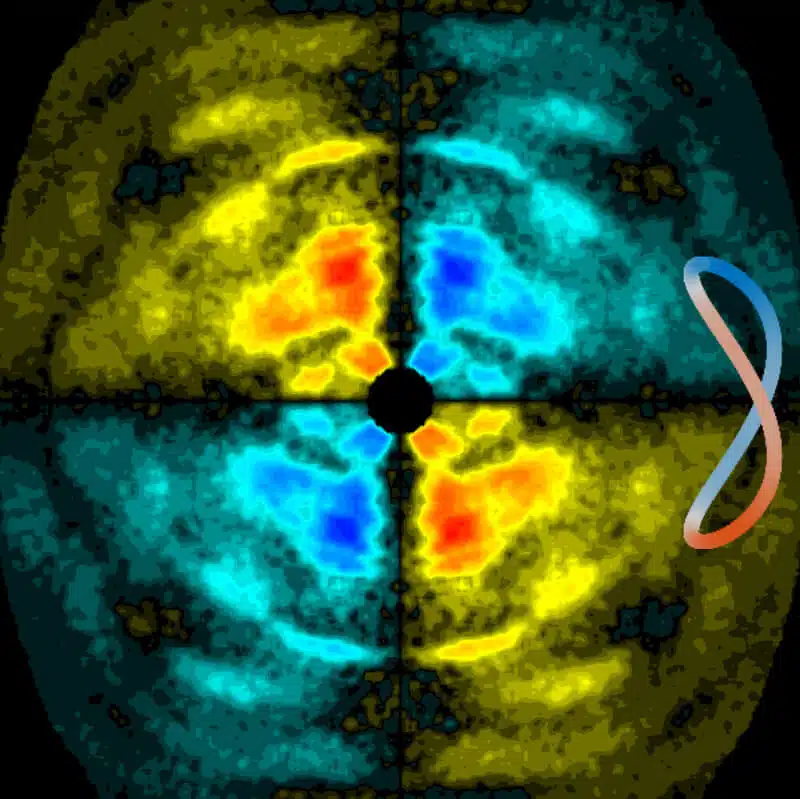The scientists of the institute and their research partners showed that the chance of an electron to pass through a tunnel at the junction between a molecule and a light field, and the manner in which it will do so, depend to a large extent on the chirality of both the molecule and the light

Will an electron slipping out of a molecule behave differently if it is "right-handed" or "left-handed"?
Right and left are used here in a certain way, to distinguish between molecules that in every other aspect are almost completely identical. The difference between them is in a feature called "chirality" - a phenomenon that is found in all orders of magnitude in nature, from elementary particles to galaxies. Chirality exists, among other things, in our palms: if we turn our right hand, we cannot overlap between it and its mirror image - the left hand; This, in contrast to objects with mirror symmetry - such as the shape of a circle or a heart.
New research of Prof. Nirit Dudovitz and members of her group in the Department of Physics of Complex Systems at the Weizmann Institute of Science examines how chirality is manifested in the encounter between a molecule and a light field, which causes an electron to slip out of the molecule. The recently published study was conducted in collaboration with The group of Prof. Jan Meyers from the University of Bordeaux in France.
But how does an electron escape from the molecule or atom in which it is found? The explanation for this comes from quantum mechanics, which describes how particles can cross barriers in a way that is not possible according to the laws of classical mechanics. This phenomenon, known as tunneling, explains, among other things, how under certain conditions an electron can go outside the atom or molecule to which it is bound.
Dudovitz describes this with a pictorial image: "The electron found in an atom can be described as if it were placed inside a large cup. When strong enough radiation hits the atom, it 'bends' the edges of the cup - and the electron can leak out through the barrier and thus pass through a tunnel." When this phenomenon occurs under the influence of a light field, it develops in ultra-short times, measured in atto-second units - which is the billionth of the billionth of a second (1 to the minus 18th power of a second).
""When a rope is twisted, a twist is created in the rope that moves along it. Similarly, chiral light is an electromagnetic field that rotates as it progresses."
The process of tunneling from atoms has been studied in depth in the last decade, but Dudowitz and the group of researchers from Bordeaux raised a question that has not yet been answered in the existing studies: how is the tunneling process affected by the chirality of the molecule? Furthermore, they wanted to examine how the chirality of the light field affects the process.
To explain what the chirality of a light field is, Dudovitz uses the image of a rope: "When you twist a rope, a twist is created in the rope that moves along it. Similarly, chiral light is an electromagnetic field that rotates as it progresses."
The scientists wanted to examine the unique moment when chiral light meets a chiral molecule, and how the brief encounter between them affects the tunneling of an electron. "Such a link between chirality and tunneling has not been done before," notes Dudovitz. To this end, they created a light with special chiral properties - a field that rotates in the shape of an "8". This unique light field combines a "right" rotation and a "left" rotation in one movement, and completes this during one light cycle - that is, during one oscillation of the light wave, like the rope moving up and down.
In this way it is possible to test two chiral instances of light, and identify when the electron reacts and at what speed. XNUMXD simulations of the electron at the moment of leaving the atom completed the picture of the behavior of the tiny objects. The questions examined in the research are among other things: Will light with a certain chirality affect differently the behavior of an electron that will tunnel through a molecule with similar or opposite chirality? Within how long will the phenomenon occur? How does the chirality of the molecule affect the characteristics of the electron that will pass through the tunnel?
The results of the study confirmed the hypothesis: the chance of an electron to go through a tunnel and the way in which it will do so depend to a large extent on the type of chirality of the molecule and of the light. These results arouse interest in future studies, which will examine additional events that occur in ultrashort times and reveal more quantum phenomena in chiral molecules.
More of the topic in Hayadan:
